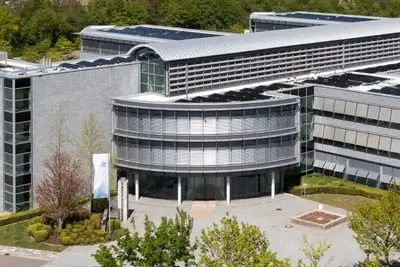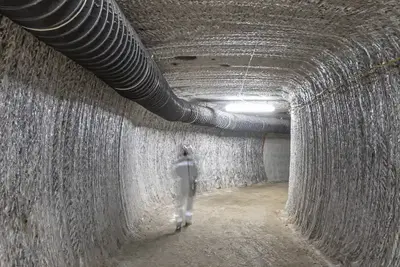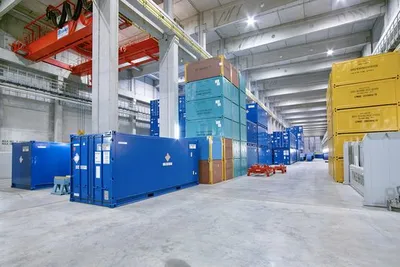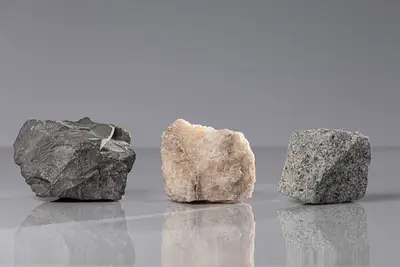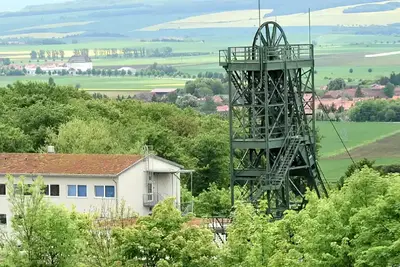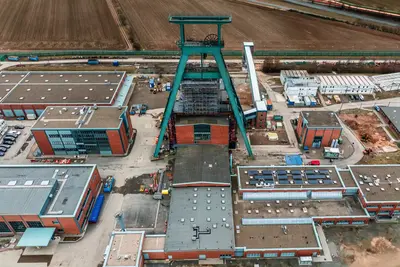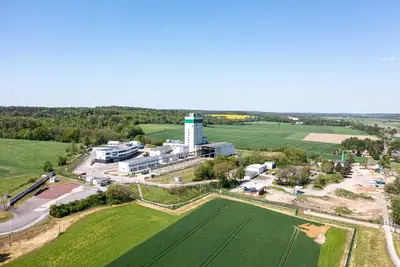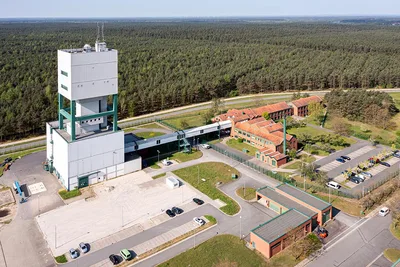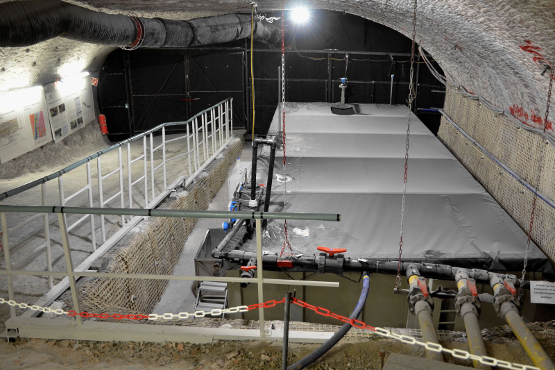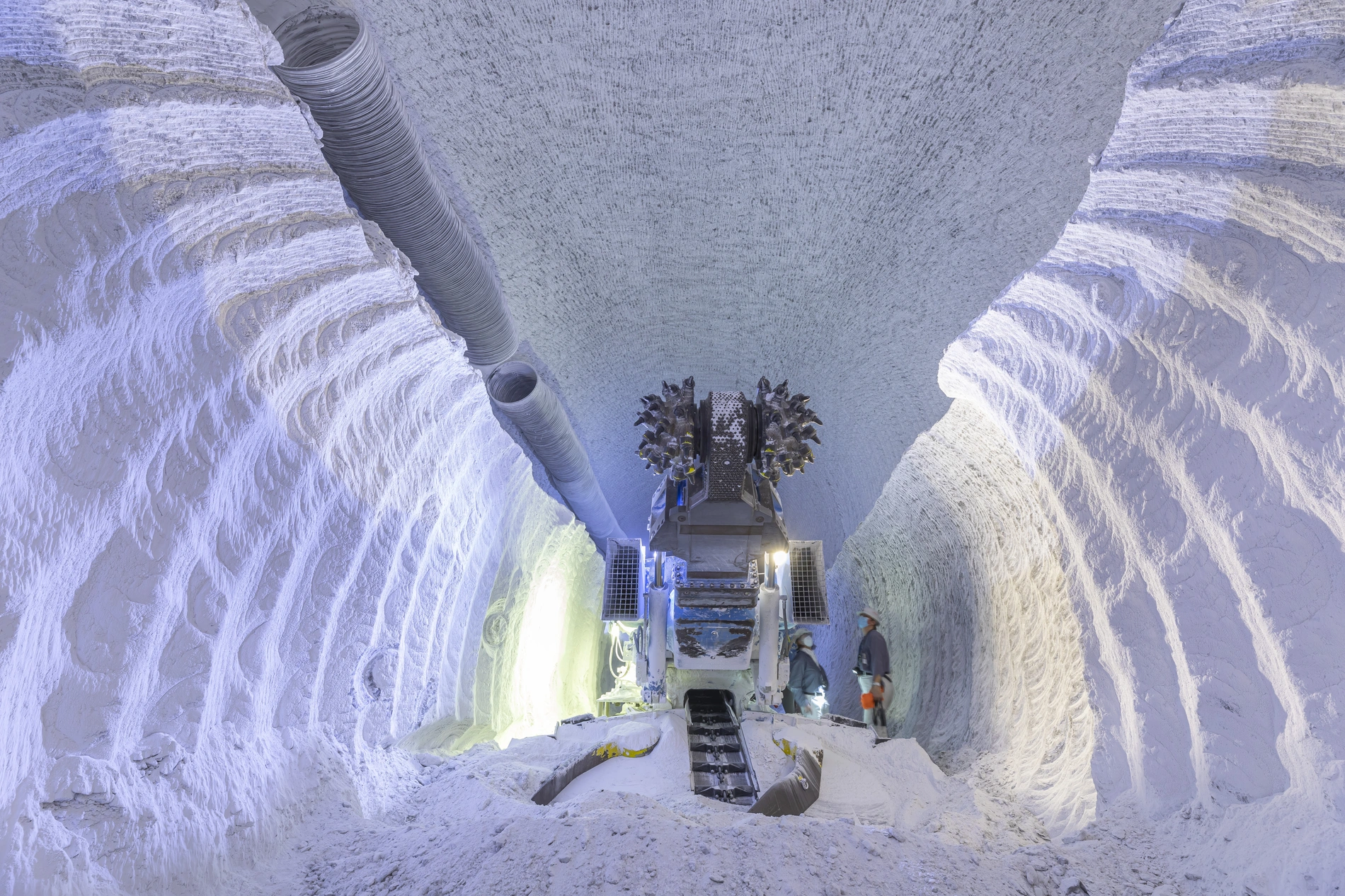
Asse II mine
Located in the district of Wolfenbüttel, Lower Saxony, the Asse II mine stores 47,000 cubic metres of low- and intermediate-level radioactive waste deep underground. This is not a safe place for the waste to be. It must be retrieved, and the mine must then be decommissioned in accordance with the legal mandate of the Bundesgesellschaft für Endlagerung mbH (BGE).
On this page:
- Video: Asse II mine explaind in 90 secounds
- Retrieval and decommissioning
- Schedule and initial cost estimate
The Asse II mine is one of three former facilities that were built around 1900 for the extraction of potash and rock salt. Whereas Asse I and III had already been abandoned decades ago, the federal government bought the Asse II mine in 1965 in order to use it for research into the final disposal of radioactive waste. To this end, some 126,000 drums of low- and intermediate-level radioactive waste were emplaced in former mining chambers from 1967 to 1978. Comprehensive inspections have been carried out to determine whether there was also high-level material in Asse II. So far, however, these inspections have not yielded any such indications.
Asse II mine explained in 90 seconds (english subtitle)
By calling up the video, you agree that your data will be transmitted to YouTube.
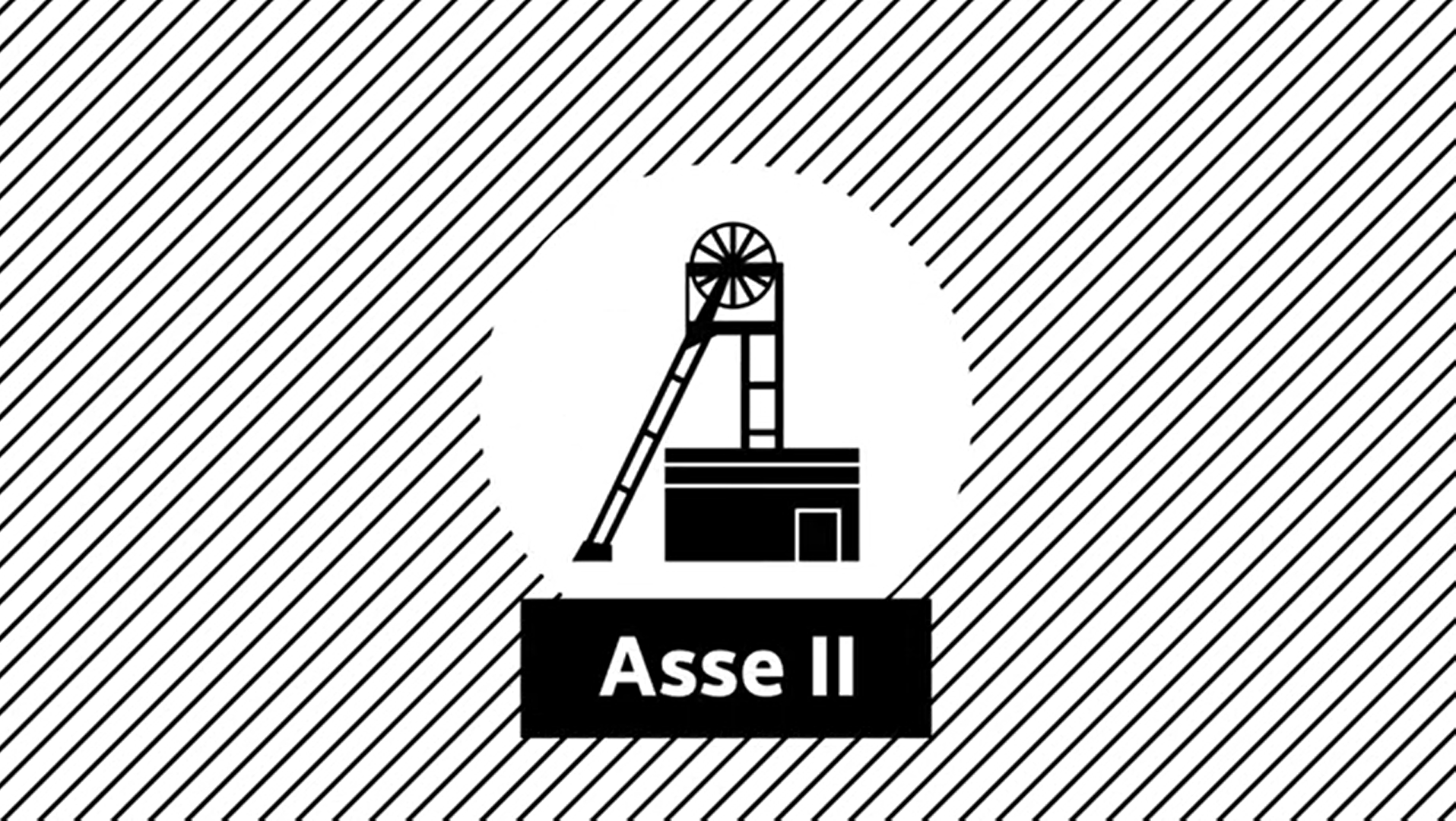
Information centre
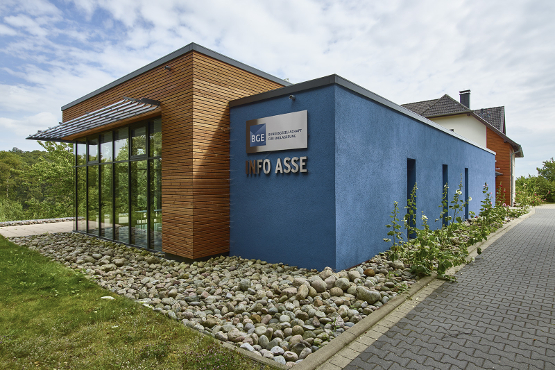
The Asse information centre is located in the immediate vicinity of the minesite itself. The Info Asse hosts an exhibition and organises tours, lectures and events on a regular basis. Visiting the information centre and mine tours are free of charge.
Retrieval and decommissioning
Neither the geology of the Asse nor the mine itself is suitable for the storage of radioactive waste. The mine is unstable and subject to the formation of cracks, allowing the inflow of saline water. This water is collected and disposed of to prevent it from coming into contact with the radioactive waste. In the long term, however, it cannot be ruled out that the inflow of water (saline solution) will lead to the release of radioactive substances.
To prevent a risk to humans and the environment, the German Bundestag has therefore adopted legislation to have the waste recovered from the Asse II mine as quickly as possible. The mine is then to be decommissioned. This process is monitored by the general public. Plans for decommissioning with the waste left in place were abandoned due to concerns around long-term safety.
Schedule and initial cost estimate
For the retrieval of the waste, experts are exploring the emplacement chambers and developing and testing suitable recovery technologies in collaboration with external partners. The waste is to be recovered via a new retrieval mine and will then be treated and safely packaged in waste treatment facilities before it can be taken to an interim storage facility. According to current plans, the retrieval of waste is set to begin in 2033.
At present, the involved parties put the cost of preparing to commence retrieval by 2033 at around €4.7 billion. This sum includes the cost of keeping the mine open and implementing the preventive measures set out in the emergency planning. This estimate has an uncertainty of around 30%.
Brief summary
- The Asse II mine is a former salt mine in Lower Saxony
- Around 47,000 cubic metres of low- and intermediate-level radioactive waste are stored deep underground in former mining chambers
- The mine is unstable and subject to the inflow of saline water
- By law, the waste must be recovered from the Asse mine by the BGE, and the mine must then be decommissioned
- It is not safe enough to decommission the mine with the waste left in place

